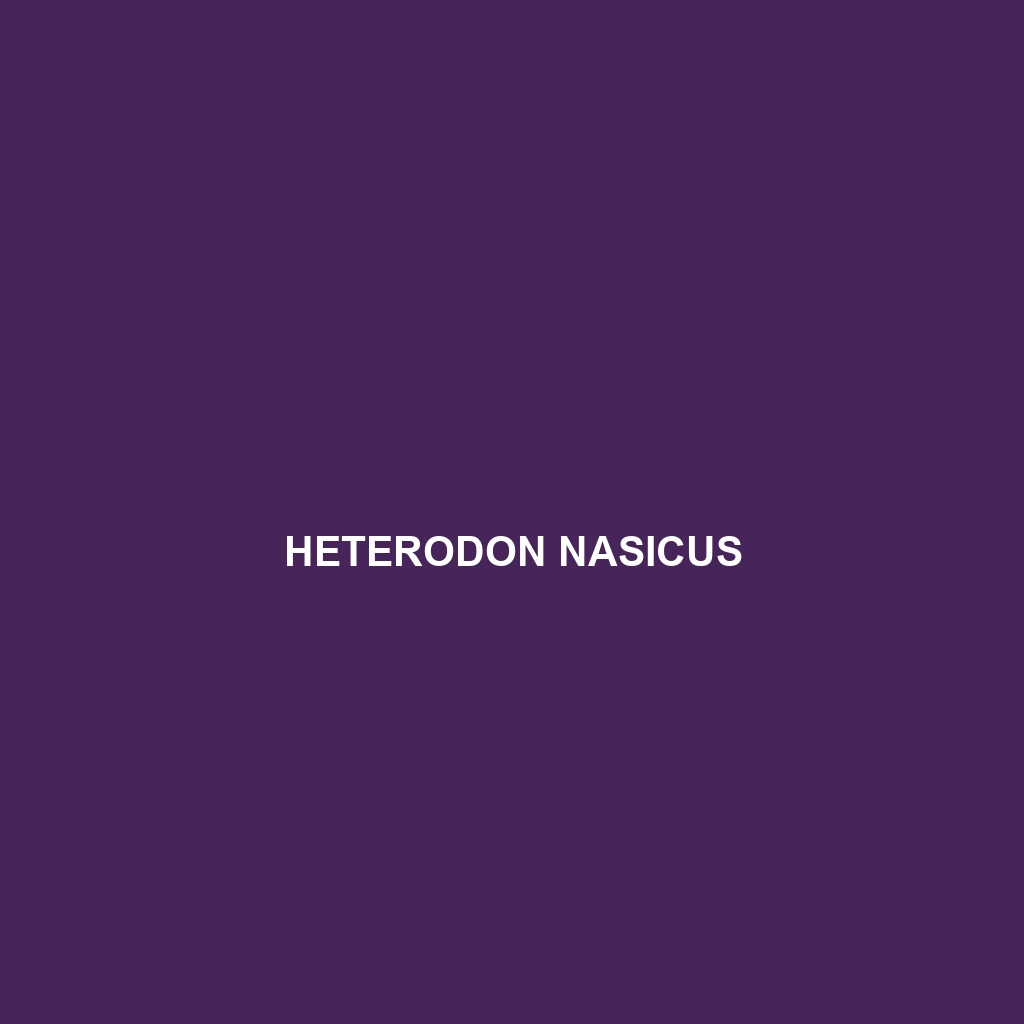Common Name
Heterodon nasicus
Scientific Name
Heterodon nasicus
Habitat
Heterodon nasicus, commonly known as the Western Hognose Snake, primarily inhabits a variety of environments across North America, particularly in the central and western United States. This species is typically found in sandy or loose soil areas, often within grasslands, savannas, and shrublands. The snake thrives in temperate regions, making it well adapted to environments that experience a range of temperatures throughout the seasons. These habitats feature well-drained soils, abundant cover, and access to small burrows or crevices where the Western Hognose can hide from predators and extreme weather conditions.
Physical Characteristics
The Heterodon nasicus exhibits several distinct physical characteristics that make it easily recognizable. Adults typically range from 20 to 33 inches in length, although some individuals can grow as long as 48 inches. This snake has a stout body shape and a distinctly broad, triangular head. Its coloration varies, but it commonly features a mix of browns, tans, and yellows, adorned with dark mottling or banding. One of the most notable features of the Western Hognose is its upturned snout, which it uses effectively to burrow into sandy substrate. The scales are smooth and glossy, assisting the snake in navigating through loose soil and vegetation.
Behavior
Heterodon nasicus is known for its unique behavioral traits, particularly its defensive tactics. When threatened, this species exhibits a remarkable display of mock death, often rolling over and playing dead to deter potential predators. This behavior, commonly referred to as thanatosis, is complemented by the release of a foul-smelling musk that further discourages attacks. The Western Hognose is primarily diurnal, meaning that it is most active during the day, searching for food or basking under the sun. During the warmer months, individuals can be seen actively hunting for prey or engaging in mating rituals in the spring.
Diet
The diet of Heterodon nasicus primarily consists of amphibians, particularly toads, which can make up a significant portion of their intake. This snake is classified as a carnivore, and it is known for its specialized feeding habits, uniquely adapted to consuming toads. The Western Hognose possesses a resistance to the toxins found in toads, allowing it to consume these prey items without harm. In addition to amphibians, this species may also eat small rodents, lizards, and invertebrates. Feeding occurs during the day, and they employ a method of constriction to subdue their prey before consumption.
Reproduction
The reproductive cycle of Heterodon nasicus is marked by distinct seasonal behaviors. Mating typically occurs in the spring, shortly after hibernation. Females lay clutches of 6 to 20 eggs in loose soil or sandy areas between late June and early August. The eggs incubate for roughly 60 to 70 days before hatching, generally yielding small snakes measuring around 6 to 10 inches in length. Newly hatched Western Hognose snakes are independent from birth and quickly begin hunting for small prey. The parental care is absent, as the mother departs after laying her eggs.
Conservation Status
As of the latest assessments, Heterodon nasicus is classified as a species of “Least Concern” by the International Union for Conservation of Nature (IUCN). However, certain populations face threats due to habitat destruction, urban development, and agricultural practices. Conservation efforts are focused on habitat preservation and educational outreach to highlight the importance of this snake within its ecosystem. Despite being relatively common in some areas, ongoing monitoring is essential to ensure population stability.
Interesting Facts
One fascinating aspect of Heterodon nasicus is its unique defense mechanism, where it not only feigns death but also buries itself in sand or loose soil to escape detection. Additionally, their upturned snouts allow them to dig efficiently, unlike many other snake species. Their specialized feeding habits make them a key player in controlling toad populations in their habitats. Furthermore, the Western Hognose is known for its distinct personality, displaying curiosity rather than the usual avoidance seen in many reptiles.
Role in Ecosystem
Heterodon nasicus plays a critical role in its ecosystem as both a predator and a prey source. By consuming toads and small rodents, this snake helps maintain the balance within its habitat, preventing overpopulation of these species. As prey, it serves as a food source for larger predators, including birds of prey and mammals. The ecological contribution of the Western Hognose highlights its importance in promoting biodiversity, role density, and overall ecosystem health.
